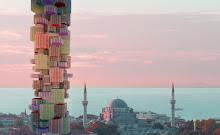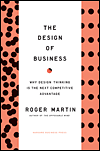***March 7, 2011***
When I first wrote this post many months ago, I would have never anticipated what would transpire in Tunisia, Egypt and now Libya. And now I watch in horror at the violence that Muammar Gaddafi has inflicted on his people in his desperate and delusional attempts to retain power for him and his family. It has become very apparent of late, that for Gaddafi dictatorship and tyranny trumps all in Libya.
Ever since Gaddafi renounced his program for weapons of mass destruction, he had become a darling of the west. Suddenly his record for human rights violations all got swept under the rug. Likewise, all the crimes that Hosni Mubarak committed against his people were conveniently overlooked in the west and by his partner countries in the region in exchange for his cooperation.
I read an article recently on Al Jazeera, questioning why this string of revolutions across the Middle East came at a complete surprise to the western media. The reporters of Al Jazeera claimed that for anyone covering the streets of the Middle East, this frustration and revolutionary spirit was very apparently bubbling over. Perhaps if the western media actually covered what was happening in the Middle East instead of the preference of sensationalizing so much of the news, we would have a much more holistic and grounded understanding of not only what is happening in this diverse and complex region but also of its people.
Now back to my original article...
******************************************************************************
It has almost been a year since its neighboring Gulf state Abu Dhabi bailed out Dubai with a $10 billion loan to stem Dubai's potential sudden and steep decline. As Dubai continues to slowly repair and regain its strength after the powerful burst of its real estate bubble and the lingering effects of the global recession, its once slumbering neighbors are percolating, their economies and built environment growing steadily. Dubai's meteoric rise from a small desert oasis to leading global city and tourist destination awoke numerous Middle Eastern countries and city-states to consider their own potential as a global center. Dubai effectively demonstrated what a vision, single-minded leadership, global branding strategies and a little oil and gas reserves could accomplish. For the past few years now Dubai's immediate neighbors, Abu Dhabi, Oman, Qatar and Kuwait have been carefully scrutinizing, modifying and implementing similar strategies - hoping for their own revival and global economic success. And for the most part, the world has taken note. There is another country however, a little further west, on the African continent that no doubt has also been inspired by Dubai's example, but is still operating amazingly enough, just under the global radar - Libya.
For the most part, what the world knows of Libya has been its ties to terrorist activities in the 1980s and the bizarre and violent antics of its leader Muammar al Gaddafi. However, since 2003, under the persuasion of Muammar Gaddafi's London School of Economics educated son, Saif al-Islam Gaddafi, Libya has been working hard to restore its relationship with the rest of the world. Libya abandoned its nuclear and WMD program and paid out US$3 billion to the victims of Pan Am flight 103 and UTA flight 722. In 2004, the United States finally removed all remaining sanctions and re-established normal diplomatic relations. Soon after that, most of the companies that were already eyeing Libya's rich petroleum reserves jumped in. (When I worked for global architecture firm Skidmore, Owings & Merrill in 2000 our weekly business development meetings on the Middle East already included reviews of Libya, while we awaited the normalization of its relationship with the United States).
Since then much has changed in Libya. Huge billboards advertising the latest, hottest real estate developments line the main streets of Tripoli and surrounding towns. For the past few years, while the world's strongest economies have stumbled, Libya's GDP has grown at an average rate of 6%. Earlier this year, Libya opened its stock exchange to foreign investors. Italy's bank UniCredit was recently awarded the first international license to operate in Libya. Over the next ten years, the Libyan government anticipates spending US$500 billion in urban construction projects.
 New hotels and commercial high rises along Tripoli's central business district
New hotels and commercial high rises along Tripoli's central business district
Many of the initial projects have focused rightly on improvements and expansion in infrastructure, housing and university developments. Architecture and engineering giant AECOM is currently overseeing an US$80 billion project to build 160,000 housing units throughout the country. One quarter of which will be in Benghazi, the second largest city in Libya. AECOM is also laying new sewage pipes, electrical lines and paving roads. Water sanitation, perhaps not so sexy, but direly necessary has also been a priority. Daewoo Motor Sales of South Korea, Italy's Impregilo Lidco, Singapore's Hyflux and India's Punj Lloyd have all signed huge contracts to build networks for drinking water, sewage and storm water.
 Eternal Crescent of Tripoli (ECOT) Hotel - one of the many new hotels under construction
Eternal Crescent of Tripoli (ECOT) Hotel - one of the many new hotels under construction
Other huge infrastructure projects simultaneously underway include the introduction of 4G wireless services into the country, a joint venture with Russia's Technoprom export and the Libya African Investment Portfolio (LIP) for power projects all over Africa including 400 kV transmission lines in Libya, and the foresightful construction of a high speed rail link along the Mediterranean coast from Sirte to Benghazi - a distance of 550 km. That contract of 2.2 billion euros was awarded to Russian Railways. Two even larger rail routes have been awarded to China Railway Construction Corporation and there is even talk of future trains traveling across Libya from Tunisia to Egypt.
New universities are also underway. New Jersey's Hill International has been hired to manage the design and pre-construction of twenty-seven new university campuses. At the end of 2009, Seventh of April Technological University Campus in Zuwarah received its final go ahead with the appointment of architecture firms IAD and Cottrell & Michelangeli and engineering firm ARUP. The thirteen building, ninety hectare campus will have a special emphasis on environmental sustainability and will be powered by solar energy. The buildings will also be designed for optimum solar and thermal control. This boom of university construction aside from being a necessary development to compete in the 21st century, is also a tremendous symbolic move on the part of the government. April 7th, 1976 the university's namesake marked the day Gaddafi's supporters violently broke up peaceful student demonstrations protesting human rights violations perpetrated by Gaddafi's military. For years after, students and other government opponents were hung in public on the anniversary of that day. The development of these universities all over Libya are therefore a powerful symbol of a government attempting to alter course and move forward.
 Model of the Seventh of April Technological University Campus, Zuwarah
Model of the Seventh of April Technological University Campus, Zuwarah
There are also ambitious plans to turn Tripoli into the region's financial hub by 2012. Gaddafi's son also plans to make Libya "the Vienna of North Africa," citing his favorite European city. Office towers and luxury hotels are rapidly being built. Turkey's EMSAS Construction is building Bab Tripoli Complex, a US$1.3 billion luxury high rise complex along the road to the city's airport. This project will contain 2,000 apartments, office space, a hospital, and a giant mall with an ice-skating rink and bowling alley. Presently, there is only one five star hotel in Libya - Corinthia Bab Africa. However, several hotels currently under construction will be completed by 2012 increasing room capacity to 2500. Direly needed established international brands such as Radisson, InterContinental, Sheraton, Marriot and Movenpick have also recently been drawn to Libya's potential as a future tourist destination with its lush Mediterranean beaches and its abundant Roman ruins.
Godwin Austen Johnson (GAJ), one of the largest UK architecture firms practicing in the United Arab Emirates has also recently set up offices in Libya while working on the interior design for 'seven star' Tower 69 hotel in Tripoli (following the example of Dubai's self proclaimed seven star Burj al Arab no doubt). GAJ was also more recently commissioned to design a large mixed use master plan in Tripoli which would include commercial, retail, hotel and residential accommodations in addition to a retail street. They have also been asked to explore restoring and refurbishing parts of the historic Medina.
 Tower 69
Tower 69
The Libyan government has also invested US$5 billion in improving capacity at their airports and building up their airlines. Turkish firm TAV Construction in conjunction with Athens based Consolidated Contractors Co. are working to revamp Tripoli's international airport. This project to be completed by next March will include two terminals that will be able handle 20 million passengers annually. The Libyan government is hoping to see a significant rise in tourism by 2020.

If not already miraculous how any one country can sustain this much development at one time, London based Edward Cullinan Architects have also been commissioned by the Libyan government to develop a master plan for a new carbon neutral city called Madinat Hadaek Shahat to be located in the country's Green Mountains in northern Libya a few kilometers south of the ancient Greek city of Cyrene, a UNESCO World Heritage Site. This 1500-hectare mixed use development will include homes for 60,000 people, schools and a botanical garden.
Despite all these impressive projects, development in Libya still has its hiccups and bumps. The use of credit cards is practically non-existent. Any development still does not proceed without the blessing of Muammar Gaddafi apparently. But for the most part, from what I have read, the development strategy while still somewhat haphazard seems sound. It lacks the over the top, superfluous developments that got Dubai into financial, environmental and urban planning trouble. Libya has instead focused on first building up their infrastructure, their sewage, water and power supplies, their roads, transport, and housing and universities for locals (which are direly necessary since unemployment remains around 30% and youth make up the majority of the population). Unlike Dubai, they are already incorporating sustainable technologies into their large scale developments. Also unlike Dubai, there seems to be a much better understanding and appreciation of the social, cultural, historical and economic value of their built heritage. Instead of destroying the old to replace it with the new like Dubai and other rapidly developing cities like Shanghai and Beijing have done, they are already implementing efforts to conserve and incorporate the historic into their new economic vision.
Libya has been on my list of countries to visit for about a decade now since I first read about its architecture in Wallpaper Magazine. Now with this national push to draw tourists to the country, Libya has inched its way closer to the top of my list. I prefer to visit most up and coming cities before they have fully arrived on the global scene. I suppose with Libya, I might just have to hurry.
 Energy City Libya - a business class city built along the coastal Malita
Energy City Libya - a business class city built along the coastal Malita
with mixed use developments, marina and parks
 Libya is 90% desert - so these developments cited are being built in the northern part of the country closer to the Mediterranean
Libya is 90% desert - so these developments cited are being built in the northern part of the country closer to the Mediterranean











































































